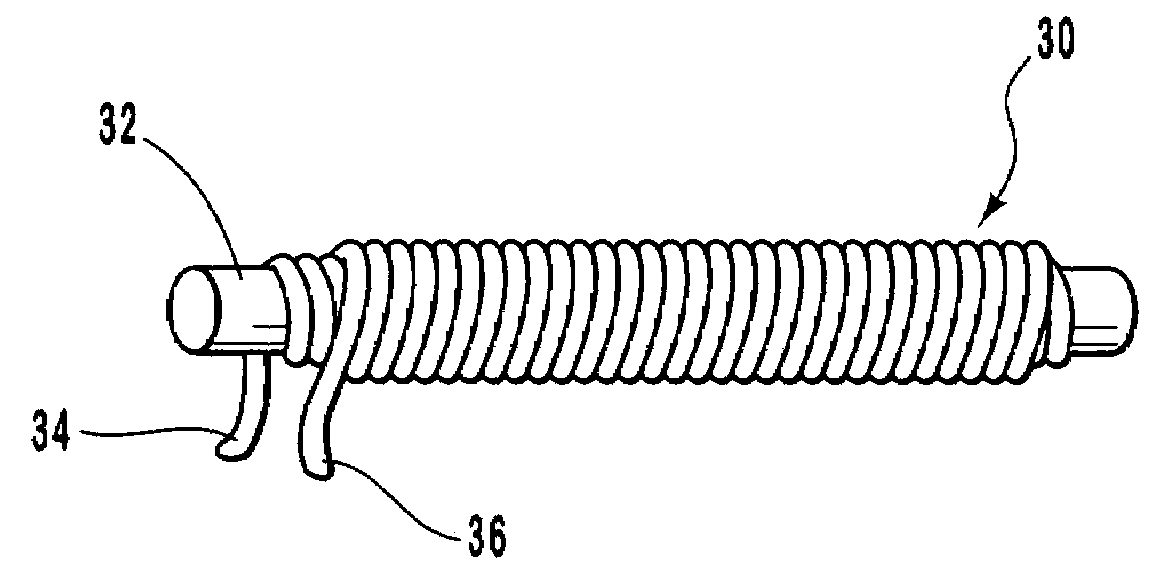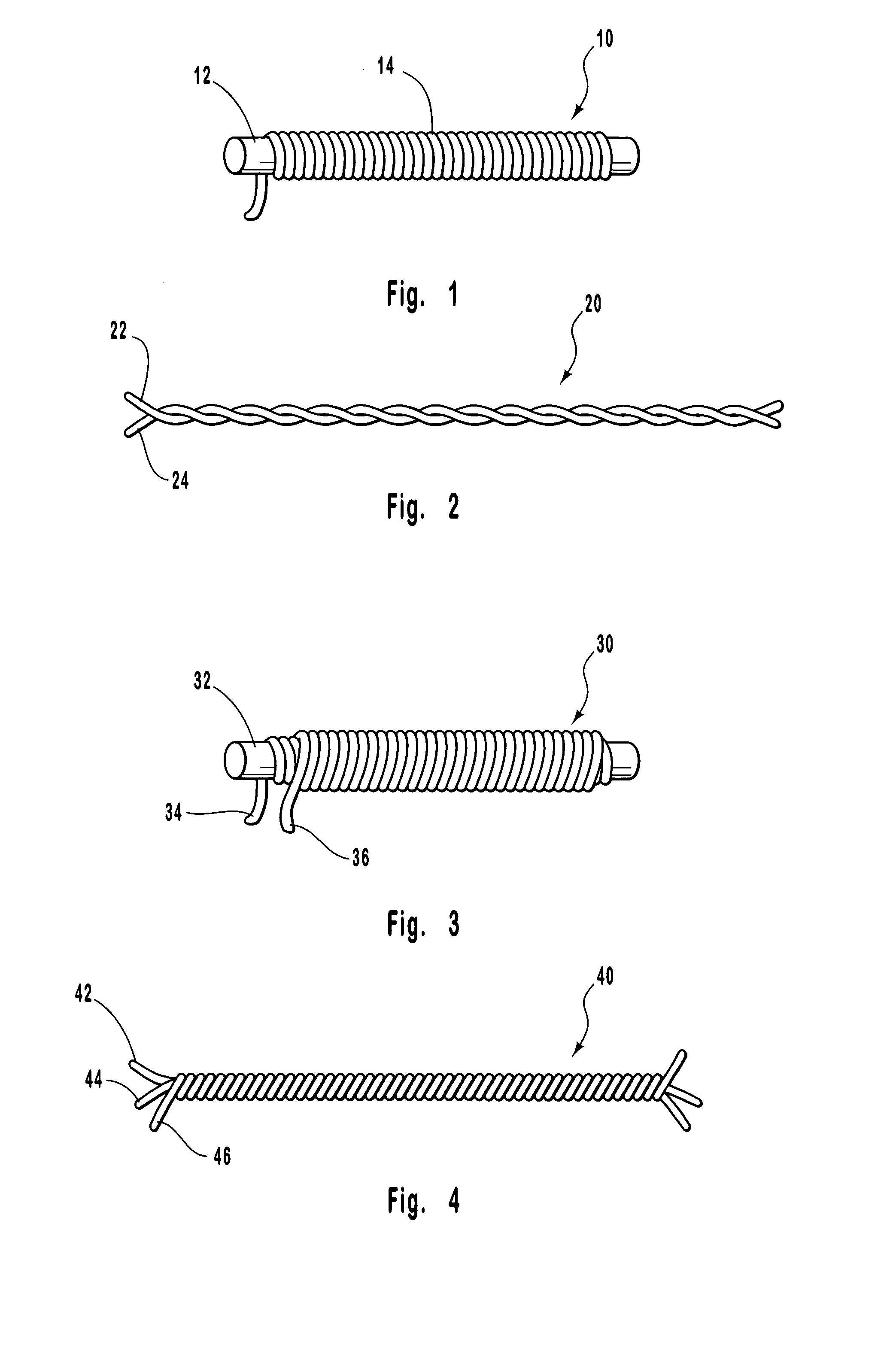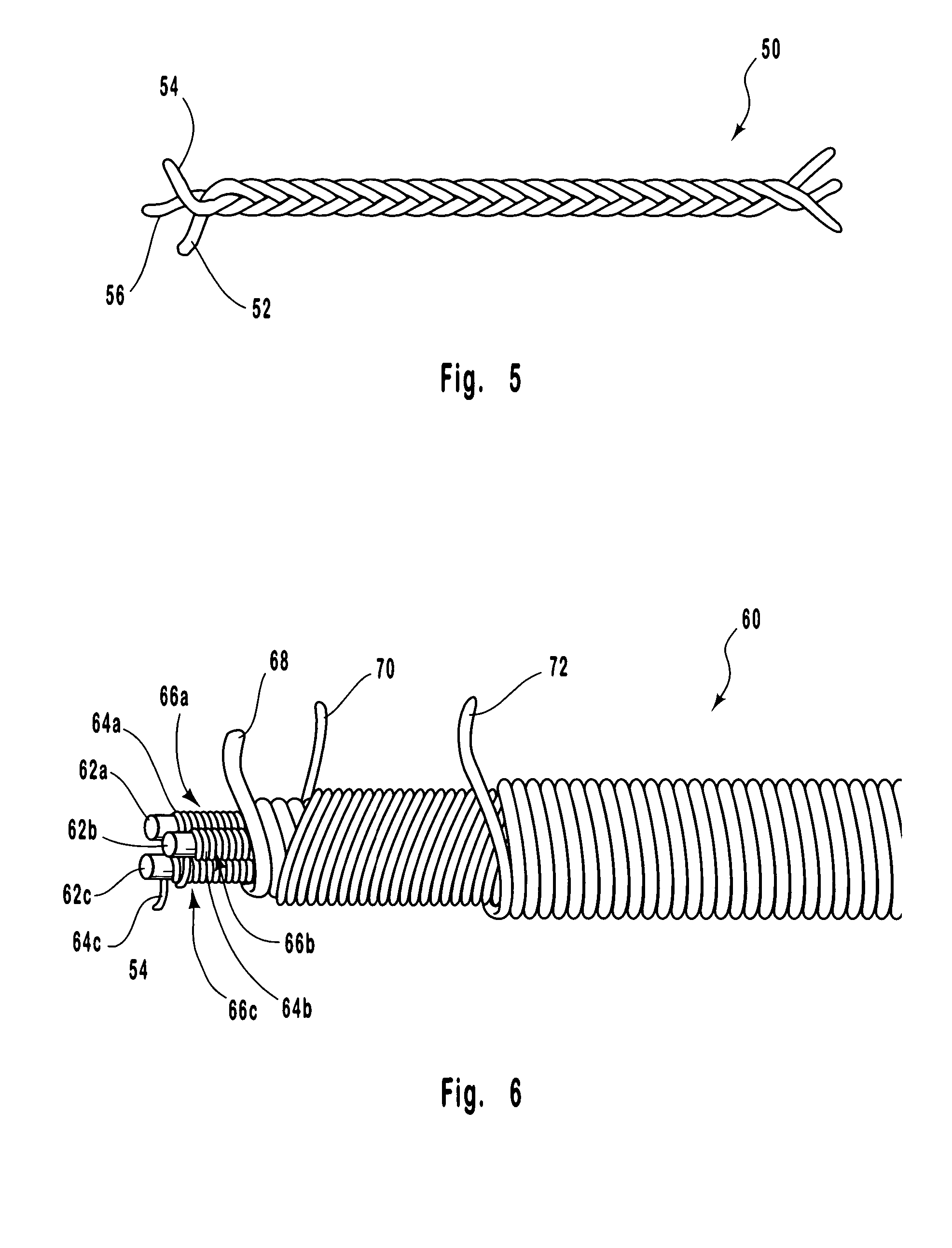Fire retardant and heat resistant yarns and fabrics incorporating metallic or other high strength filaments
a technology of high-tensile filaments and yarns, applied in the field of yarns or fabrics, can solve the problems of not being able to compensate for the risk of severe burns, insufficient clothing, and unwarranted exposure to deadly fires, and achieves increased fire retardant and heat-resistant properties, tensile strength, and high durability.
- Summary
- Abstract
- Description
- Claims
- Application Information
AI Technical Summary
Benefits of technology
Problems solved by technology
Method used
Image
Examples
example 1
[0116]A core was formed from two 20 gauge strands consisting of Kevlar fibers. A 0.002″ stainless steel filament was wrapped around the Kevlar core to form an intermediate structure. Two 18 gauge fire retardant and heat resistant threads of CARBONX were wrapped around the intermediate structure to form the yarn. Each thread of CARBONX consisted of an 86 / 14 blend of oxidized polyacrylonitrile fibers and Kevlar fibers measured as weight percent of the CARBONX threads. The resulting yarn comprised 43.6% by volume of the CARBONX threads, 12.8% by volume of the stainless steel filament, and 43.6% by volume of the Kevlar threads.
[0117]A core was formed from two 20 gauge strands consisting of Kevlar fibers and one stainless steel filament having a diameter of 0.002″ A 0.002″ stainless steel filament was wrapped around the core to form an intermediate structure. Two 18 gauge threads of CARBONX were wrapped around the intermediate structure to form the yarn. Each thread of CARBONX consisted ...
PUM
 Login to View More
Login to View More Abstract
Description
Claims
Application Information
 Login to View More
Login to View More - R&D
- Intellectual Property
- Life Sciences
- Materials
- Tech Scout
- Unparalleled Data Quality
- Higher Quality Content
- 60% Fewer Hallucinations
Browse by: Latest US Patents, China's latest patents, Technical Efficacy Thesaurus, Application Domain, Technology Topic, Popular Technical Reports.
© 2025 PatSnap. All rights reserved.Legal|Privacy policy|Modern Slavery Act Transparency Statement|Sitemap|About US| Contact US: help@patsnap.com



